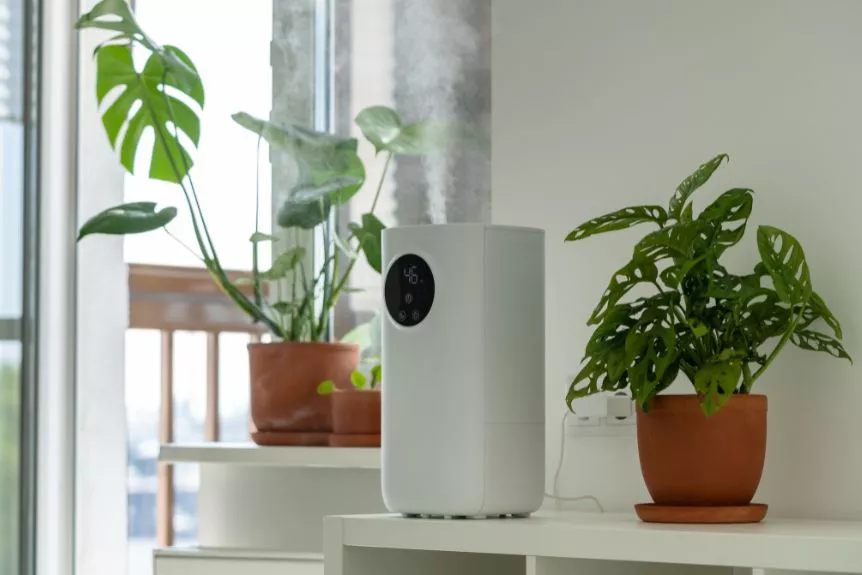
To maintain optimal climate control in your indoor grow room, precision is key. Monitoring and adjusting temperature, humidity, ventilation, and lighting are crucial elements. Imagine the impact of a slight temperature fluctuation or inadequate air circulation on your plants' growth. With a few strategic tweaks and the right equipment, you can create a haven for your plants to thrive. But how do you strike that perfect balance to ensure your indoor garden flourishes to its fullest potential?
Temperature Control
To ensure optimal plant growth in indoor grow rooms, maintaining a consistent temperature is crucial. Fluctuations in temperature can stress your plants, impacting their development and overall yield. You should aim to keep the temperature within a specific range suitable for the plants you're cultivating. Different types of plants have varying temperature requirements, so it's essential to research the ideal temperature range for your specific crops.
Investing in a reliable thermometer and thermostat is key to monitoring and controlling the temperature accurately. Place the thermometer at plant canopy height to get the most accurate readings, as this is where the plants are experiencing the temperature. Regularly check and calibrate your equipment to ensure its accuracy and make any necessary adjustments promptly.
During the day, plants generally thrive in slightly higher temperatures, while cooler temperatures are suitable at night. Maintaining this diurnal temperature fluctuation mimics natural conditions and can promote healthy growth. Remember, consistency is key when it comes to temperature control in indoor grow rooms.
Humidity Regulation
Maintaining the right levels of humidity in your indoor grow room is essential for the health and growth of your plants. Humidity regulation plays a crucial role in creating an optimal environment for your plants to thrive. High humidity levels can lead to issues such as mold, mildew, and pests, while low humidity can cause stunted growth and dryness in plants.
To regulate humidity effectively, consider investing in a hygrometer to monitor levels accurately. The ideal humidity range for most plants during the vegetative stage is between 40-60%, while in the flowering stage, it's best to aim for 40-50%.
To increase humidity, you can use tools like humidifiers or simply place trays of water near your plants. On the other hand, if humidity levels are too high, a dehumidifier can help lower them. It's crucial to adjust humidity levels based on the specific needs of your plants and regularly monitor and maintain the humidity in your grow room for optimal growth and health.
Ventilation Management
Effective ventilation management plays a crucial role in maintaining optimal air circulation within your indoor grow room. Proper ventilation helps control temperature, humidity, and the levels of CO2, all of which are essential for healthy plant growth.
To manage ventilation effectively, start by installing exhaust fans to remove stale air and bring in fresh air from outside. Positioning intake fans strategically can help create a consistent airflow throughout the room. Additionally, using oscillating fans within the grow space can help distribute air evenly, preventing hot spots and stagnant pockets.
Regularly clean and maintain your ventilation system to ensure it functions efficiently. Keep an eye on the temperature and humidity levels to adjust the ventilation settings accordingly. By maintaining a well-ventilated grow room, you provide your plants with the ideal growing environment, helping them thrive and reach their full potential.
Lighting Optimization
For optimal plant growth in your indoor grow room, ensuring proper lighting optimization is key. The type of lighting, its intensity, and duration are crucial factors to consider.
LED lights are energy-efficient and produce less heat, making them a popular choice for indoor growers. They also provide a full spectrum of light that can benefit different growth stages of your plants. Position your lights at the right distance from your plants to prevent burning or stretching.
Adjust the light intensity according to the growth stage; seedlings may require less intense light than mature plants. Implement a consistent light schedule to mimic natural daylight cycles, typically 18 hours on and 6 hours off for most plants during the vegetative stage.
During the flowering stage, reducing the light cycle to 12 hours on and 12 hours off can promote bud development. Regularly monitor your lights for any signs of malfunction or degradation to ensure your plants receive the optimal light they need for healthy growth.





